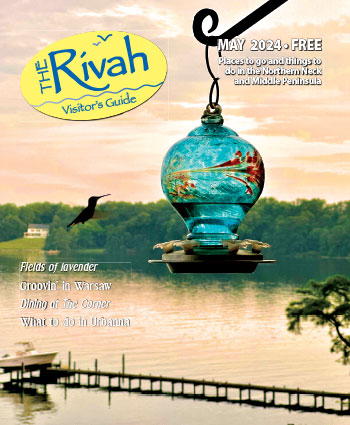 In honor of 30 years of The Rivah Visitor’s Guide we are featuring stories that have previously been printed throughout our 30 year history. This feature story appeared in the August 2013 issue.
In honor of 30 years of The Rivah Visitor’s Guide we are featuring stories that have previously been printed throughout our 30 year history. This feature story appeared in the August 2013 issue.
When you live near the Chesapeake Bay, at some point during the summer the answer to the question “What’s for dinner?” has to be steamed crabs.
Lucky enough to be the granddaughter of a commercial waterman, I was spoiled. From the time I was old enough to remember until I was in my late 20s, my family enjoyed a bushel of steamed crabs every Saturday night from June through late fall.
After my grandfather retired, I was forced to buy the bay delicacy. About four years ago, my husband and I gained access to a private dock and started catching our own. And there’s nothing quite as rewarding or satisfying as sitting down to a table full of hot steamed Chesapeake Bay blue crabs you caught yourself.
Individuals are allowed to have up to five crab pots with the purchase of a $36 recreational license from Virginia Marine Resources Commission, according to media representative Laurie Naismith. Pots must be tagged with the license number and the season for the recreational gear license is June 1 through September 15.
Otherwise, individuals are allowed to “take by dip net, hand line or two crab pots as much as one bushel of hard crabs and two dozen peeler crabs in any one day for personal use,” according VMRC regulations.
Pots can be placed offshore or at a dock, said Naismith. So that means both a husband and wife may have two pots each and can catch a bushel of crabs a day apiece. Now, don’t necessarily plan on that. My husband and I leave our pots over for several days and catch about a half bushel total, but it’s enough for a nice “mess of crabs” as my grandfather would say.
Crabbing with pots or by hand line is allowed at any public dock, said Naismith, who doesn’t recommend leaving a pot unattended. “It might disappear,” she said.
However, visitors and residents in the Northern Neck and Middle Peninsula are welcomed to crab at any pier where fishing is allowed. They can even have pots offshore if they have a boat, she said. But the pots should be marked with a buoy. She also advises attaching a name tag with pertinent information including address and phone number.
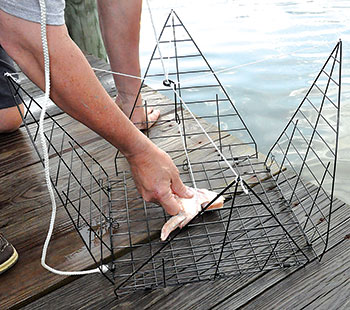
Bunkers, or menhaden, are an oily bait fish ideal for crabbing. Crab necks and pieces are also a good choice. Both are inexpensive and chicken can be purchased at any grocery store, while bunkers are available at many commercial crab houses and fresh seafood markets. Often, stores and marinas selling fish bait also will carry bunkers or crab bait.
And the best part is anyone can crab, especially from shore using a pot or hand line. It’s fun for all ages and is a great family activity.
So…bait, catch, cook and enjoy a dinner of fresh steamed crabs.
Grab a line and a dip net: You’ve got yourself a date
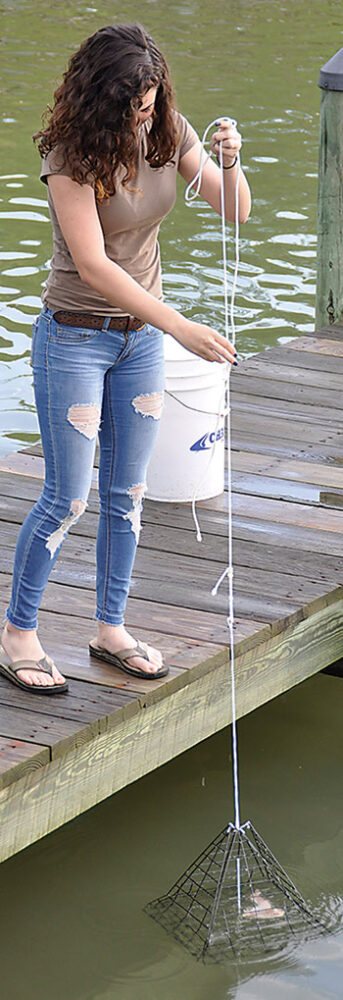
Although I grew up the granddaughter of a Tangierman and commercial waterman, I’d never crabbed using a hand line until my husband came along.
A date early in our courtship some 26 years ago involved crabbing off a bridge on a back road in Mathews County. After pulling up my first crab with a line and dip net, I was hooked.
Now don’t expect to haul in a bushel of crabs in a short amount of time, or even any for that matter, but hand line crabbing is a fun afternoon or day-long adventure for kids and adults.
Hand line crabbing is simple and works best if the tide is running, if you’re crabbing from a bridge or dock, and rising, if you’re crabbing from shore.
The tools of hand line crabbing are few and inexpensive. You need a dip net or crab net, string, large clip and bait. A Japanese or triangle crab pot, shaped in a triangle or pyramid, may also be used and can be purchased at most marine supply stores.
Bait, either chicken necks or fish, can be tied to one end of a long piece of string or placed on a clip hook, which can be homemade from a metal coat hanger, tied at one end of the string.
Simply drop the line into the water and wait. Grab each line with the thumb and forefinger and feel for pulling, as crabs claw at the bait. Slowly ease the line upward, keeping the line tight, but pulling an inch or two at a time. When the crab is visible near the water’s surface, quickly scoop him up with the dip net. A team effort is best for the catch and scoop, which makes hand line crabbing a great family or date activity.
If using a triangle crab pot, simply secure the bait to the bottom of the pot with string and lower into the water. The sides will fall open. Unfortunately, there’s no tell-tale signs a crab has entered the pot. No pulling or clawing. So frequently yank the pot to the surface swiftly. This method is ideal for young kids who aren’t often patient enough to pull a line up slowly.
Crabbin’ lingo
Jimmy: a male hard crab with a narrow apron on the abdomen.
Sook: a mature female hard crab with a semicircular apron.
She-crab: an immature female hard crab with a triangular apron.
Sponge crab: an adult female hard crab which has extruded her eggs on the abdomen or abdominal flap. The egg mass or “Sponge” may contain about 2 million eggs.
Peeler crab: any crab with a soft shell fully developed under the hard shell. A white, pink, or red line on the outer section of the “backfin” is an indicator.
Backfin: the last leg of the crab, flattened to aid in swimming. Also known as the swimmer or paddle fin.
Buster: a crab that has begun to back out of its old shell.
Softshell crab: a crab which has recently emerged from its old shell. The new shell is soft and tender.
Papershell: a softshell crab whose shell has begun to harden. The shell stiffens and becomes tougher – usually within 12 hours after shedding the old shell.
Doubler: a male crab carrying a female crab prior to or after mating. Usually the females are peelers or softshells.
Size/Catch Restrictions
 Minimum size limits: 5 inches for male hard crabs (jimmies) and immature female hard crabs, 3 ¼ inches for peeler crabs caught from March 17 through July 15 and 3 ½ inches from July 16 until November 30 in the Chesapeake Bay and its tributaries; 3 ¼ inches for peeler crabs caught on the seaside of the Eastern Shore; and 3 ½ inches for softshell crabs measured from tip to tip of the longest spikes. No size limits exist for adult female hard crabs (sooks).
Minimum size limits: 5 inches for male hard crabs (jimmies) and immature female hard crabs, 3 ¼ inches for peeler crabs caught from March 17 through July 15 and 3 ½ inches from July 16 until November 30 in the Chesapeake Bay and its tributaries; 3 ¼ inches for peeler crabs caught on the seaside of the Eastern Shore; and 3 ½ inches for softshell crabs measured from tip to tip of the longest spikes. No size limits exist for adult female hard crabs (sooks).- Dark sponge (brown through black coloration) crabs must be returned to the water alive and not altered or destroyed in any manner from March 17 through June 30; however, a tolerance of 10 dark sponge crabs per bushel is allowed.
Build your own crab pot
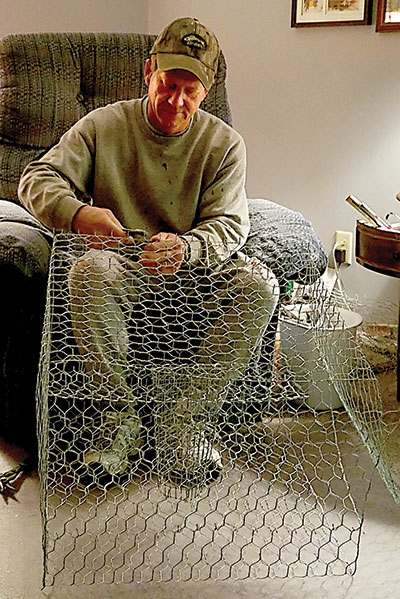
Crab pots are available at most hardware or marine supply store and range from about $25 to $40 depending upon the size.
The ambitious crabber and do-it-yourselfer can build one. Supplies are also available at any hardware store or in the hardware section at most big box stores. There are literally dozens of online videos and how-to instructions on building a crab pot.
Remember to include two unobstructed cull rings at least 2 3/8 inches inside diameter on opposite exterior side panels of the upper chamber of the pot. This allows for smaller crabs to exit the pot and is a gear requirement of the Virginia Marine Resources Commission.
Basic tools of the trade include:
- Wire cutters
- Needle nose pliers
- Hog ring fastening tool
- Bungee cord
- 20 feet of 18-gauge chicken wire
- 12 feet of 11-gauge galvanized wire
- Galvanized crab pot staples
Source: Virginia Marine Resources Commission


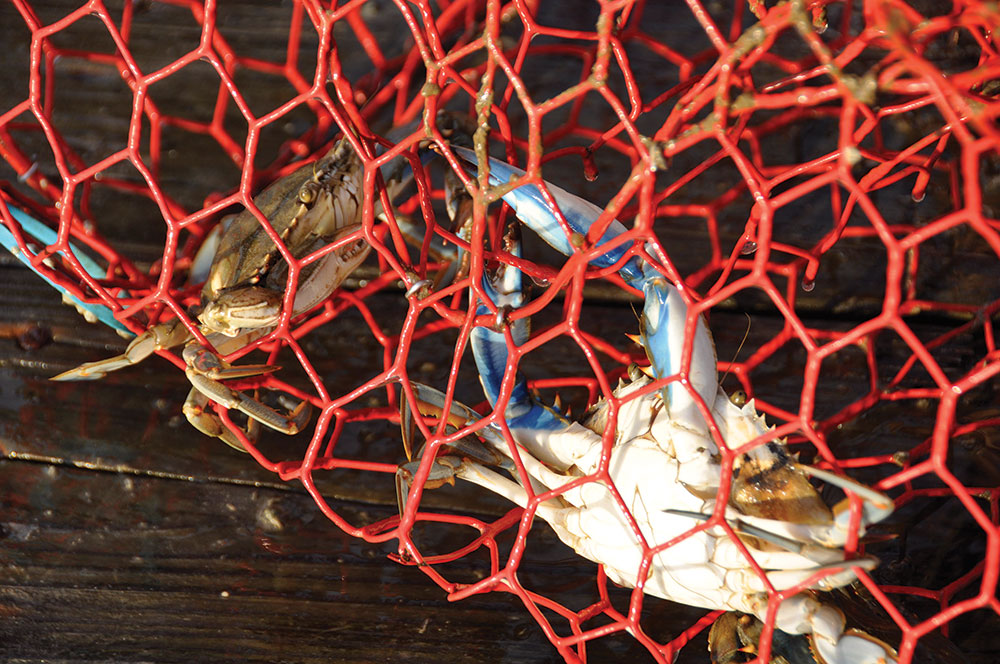 In honor of 30 years of The
In honor of 30 years of The 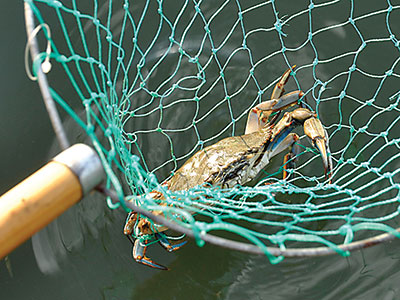 Minimum size limits: 5 inches for male hard crabs (jimmies) and immature female hard crabs, 3 ¼ inches for peeler crabs caught from March 17 through July 15 and 3 ½ inches from July 16 until November 30 in the Chesapeake Bay and its tributaries; 3 ¼ inches for peeler crabs caught on the seaside of the Eastern Shore; and 3 ½ inches for softshell crabs measured from tip to tip of the longest spikes. No size limits exist for adult female hard crabs (sooks).
Minimum size limits: 5 inches for male hard crabs (jimmies) and immature female hard crabs, 3 ¼ inches for peeler crabs caught from March 17 through July 15 and 3 ½ inches from July 16 until November 30 in the Chesapeake Bay and its tributaries; 3 ¼ inches for peeler crabs caught on the seaside of the Eastern Shore; and 3 ½ inches for softshell crabs measured from tip to tip of the longest spikes. No size limits exist for adult female hard crabs (sooks).